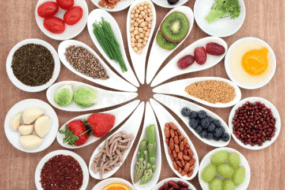
In today’s fast-paced world, convenience often takes precedence over nutrition. Supermarkets offer a vast array of fruits and vegetables year-round, regardless of their natural growing seasons. However, eating seasonally—that is, consuming produce during its natural harvesting period—has profound benefits for both personal health and environmental sustainability. From higher nutritional value to better taste and reduced environmental impact, consuming fresh, seasonal ingredients is a powerful step toward overall well-being.
The Nutritional Superiority of Seasonal Foods
One of the most compelling reasons to eat seasonally is the superior nutritional content of fresh, in-season produce. Fruits and vegetables harvested at their peak ripeness contain the highest levels of vitamins, minerals, and antioxidants. When produce is grown out of season, it often requires artificial ripening agents, longer storage times, and transportation from distant locations, all of which can diminish its nutrient content.
For example, studies have shown that spinach and broccoli, when grown and consumed in season, contain significantly higher levels of vitamin C than their out-of-season counterparts. Similarly, strawberries picked at their peak have more antioxidants than those grown in a controlled environment outside their natural season.
Enhanced Flavor and Quality
Anyone who has bitten into a fresh, locally sourced tomato in the summer knows the stark difference in taste between in-season and out-of-season produce. Seasonal fruits and vegetables are harvested at their peak ripeness, ensuring they develop their full spectrum of natural flavors. Out-of-season produce, on the other hand, is often picked before it fully ripens to withstand transportation, leading to bland or artificially ripened food.
By choosing seasonal ingredients, consumers experience the natural sweetness of fruits like peaches in the summer or the deep, earthy flavors of root vegetables in the fall. This enhances the overall eating experience and encourages healthier food choices by making nutritious meals more enjoyable.
Fewer Pesticides and Additives
Fruits and vegetables grown out of season often require synthetic fertilizers, pesticides, and preservatives to withstand extended transportation and storage. By contrast, in-season produce is naturally more resilient to pests and diseases, requiring fewer chemical interventions.
Additionally, some off-season produce is grown in greenhouses or imported from countries with different agricultural regulations, where pesticide use may be less controlled. Consuming local, in-season food can reduce exposure to harmful chemicals, promoting better health.
Supports the Body’s Natural Nutritional Needs
Nature has a way of providing exactly what our bodies need at the right time. Seasonal foods align with our bodies’ changing requirements throughout the year.
- Winter: Cold-weather produce, such as citrus fruits, are rich in vitamin C, which helps boost immunity during flu season. Root vegetables like carrots and sweet potatoes provide warming energy and complex carbohydrates for sustenance during colder months.
- Spring: Leafy greens, asparagus, and peas detoxify and rejuvenate the body after winter, aiding digestion and improving liver function.
- Summer: Hydrating fruits like watermelon, cucumbers, and berries help cool the body and keep it hydrated.
- Fall: Squash, pumpkins, and apples provide essential vitamins and fiber to prepare the body for winter.
By following nature’s cues, individuals can optimize their health by consuming the right nutrients at the right time.
Reduces Environmental Impact
Eating seasonally is not only beneficial for personal health but also for the planet. When produce is sourced locally and consumed in its natural growing season, it requires fewer resources for cultivation and transportation.
Out-of-season produce is often imported from distant locations, contributing to increased carbon emissions due to long transportation routes. Additionally, the use of energy-intensive greenhouses to simulate growing conditions further exacerbates environmental harm.
By prioritizing seasonal and locally grown foods, consumers can lower their carbon footprint and support sustainable agricultural practices.
Economic Benefits: Supporting Local Farmers
Choosing seasonal produce directly benefits local farmers and economies. When consumers buy food grown within their region, they help sustain local agriculture, promote community-supported farming, and reduce reliance on industrial-scale farming operations.
Farmers’ markets, community-supported agriculture (CSA) programs, and local co-ops offer fresh, in-season produce while fostering a sense of community. Supporting local farmers also helps preserve biodiversity, as smaller farms are more likely to grow diverse crops rather than relying on monoculture practices.
Budget-Friendly and Cost-Effective
Seasonal food is often more affordable than out-of-season alternatives. When produce is in abundance, prices drop due to higher supply. Conversely, out-of-season foods that require extensive resources for cultivation and transportation tend to be more expensive.
For example, buying fresh berries in the summer when they are abundant is far more cost-effective than purchasing imported berries in the winter. By planning meals around seasonal availability, consumers can enjoy high-quality food while saving money.
Ways to Incorporate Seasonal Eating into Your Lifestyle
Adopting a seasonal diet does not have to be complicated. Here are some simple strategies to embrace eating fresh, seasonal foods:
- Shop at Local Farmers’ Markets: Farmers’ markets are excellent sources of fresh, in-season produce. Engaging with local farmers can also provide insights into the best seasonal choices.
- Join a CSA Program: Community-supported agriculture (CSA) programs deliver fresh, locally grown produce to members on a weekly or biweekly basis.
- Grow Your Own Produce: Even a small garden or a few potted plants can provide fresh, seasonal herbs, fruits, and vegetables.
- Learn to Preserve Seasonal Foods: Canning, freezing, and fermenting are great ways to enjoy seasonal produce year-round while maintaining nutritional benefits.
- Plan Meals Around the Seasons: Research what is in season and create meal plans that incorporate those ingredients. This approach not only enhances freshness and flavor but also adds variety to meals.
- Support Local Grocery Stores and Co-Ops: Some smaller grocery stores and cooperative markets prioritize stocking locally grown, seasonal foods.
Conclusion
Eating seasonally is one of the simplest yet most impactful ways to improve health, support local communities, and protect the environment. Fresh, in-season produce provides superior nutrition, better taste, and fewer chemicals while aligning with the body’s natural needs. Additionally, consuming seasonal foods reduces carbon emissions, supports small farmers, and saves money. By making conscious choices and embracing seasonal eating, individuals can cultivate a healthier, more sustainable lifestyle that benefits both themselves and the planet.






















